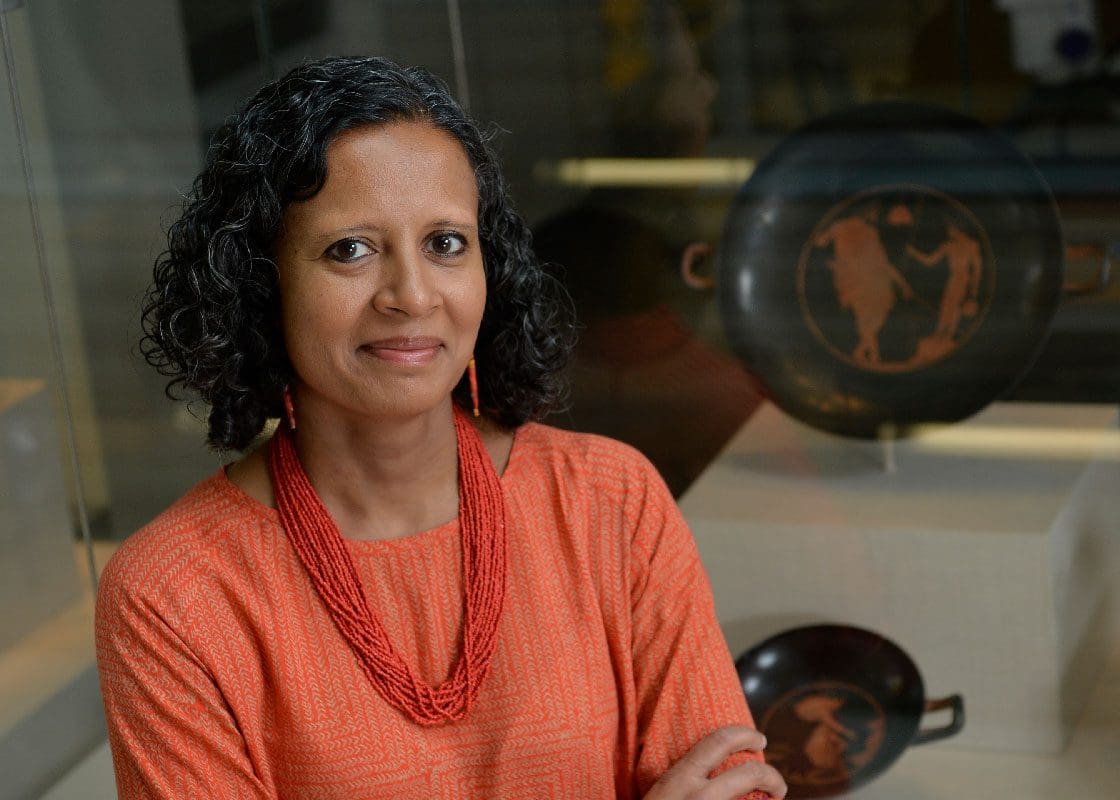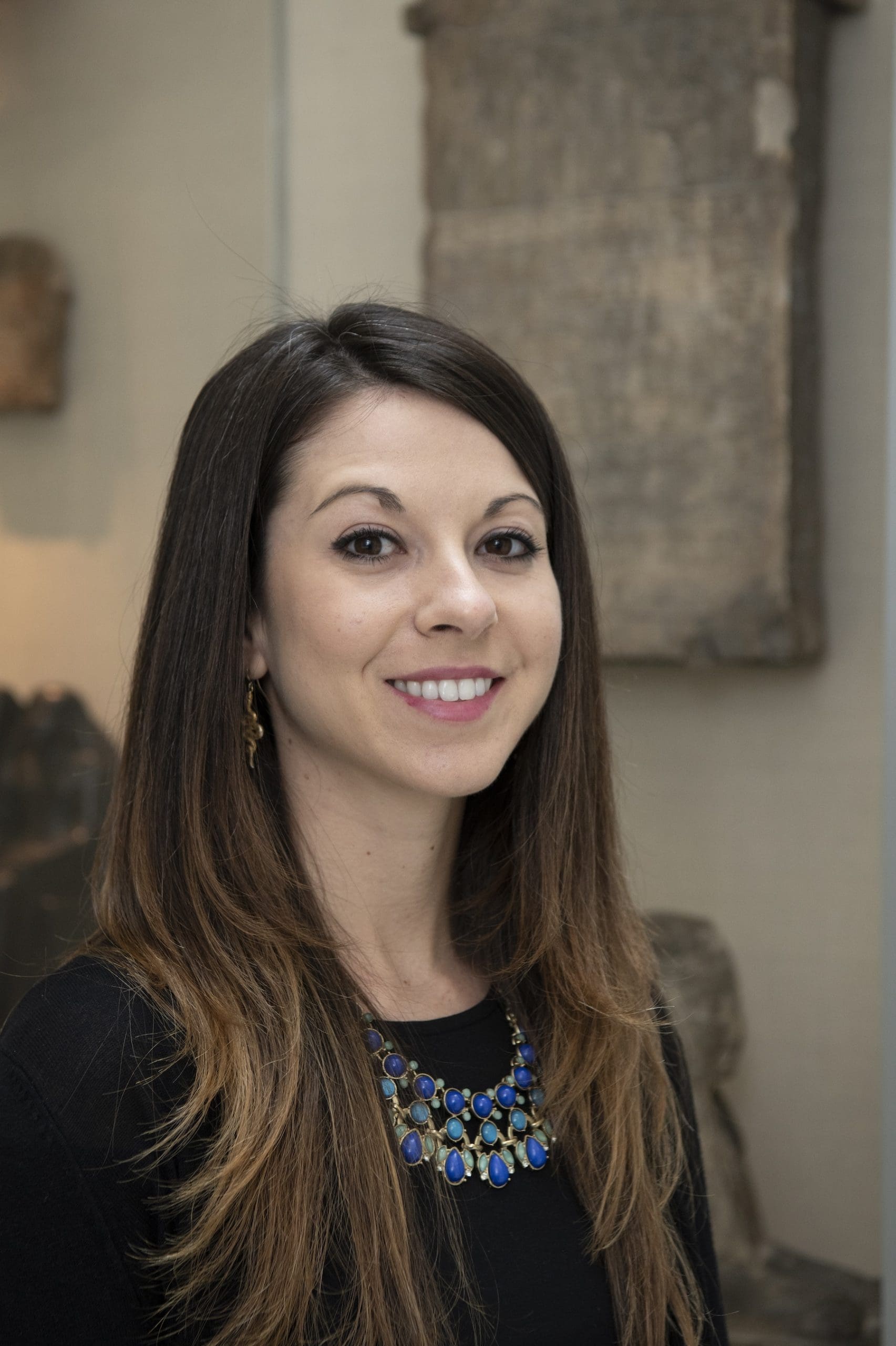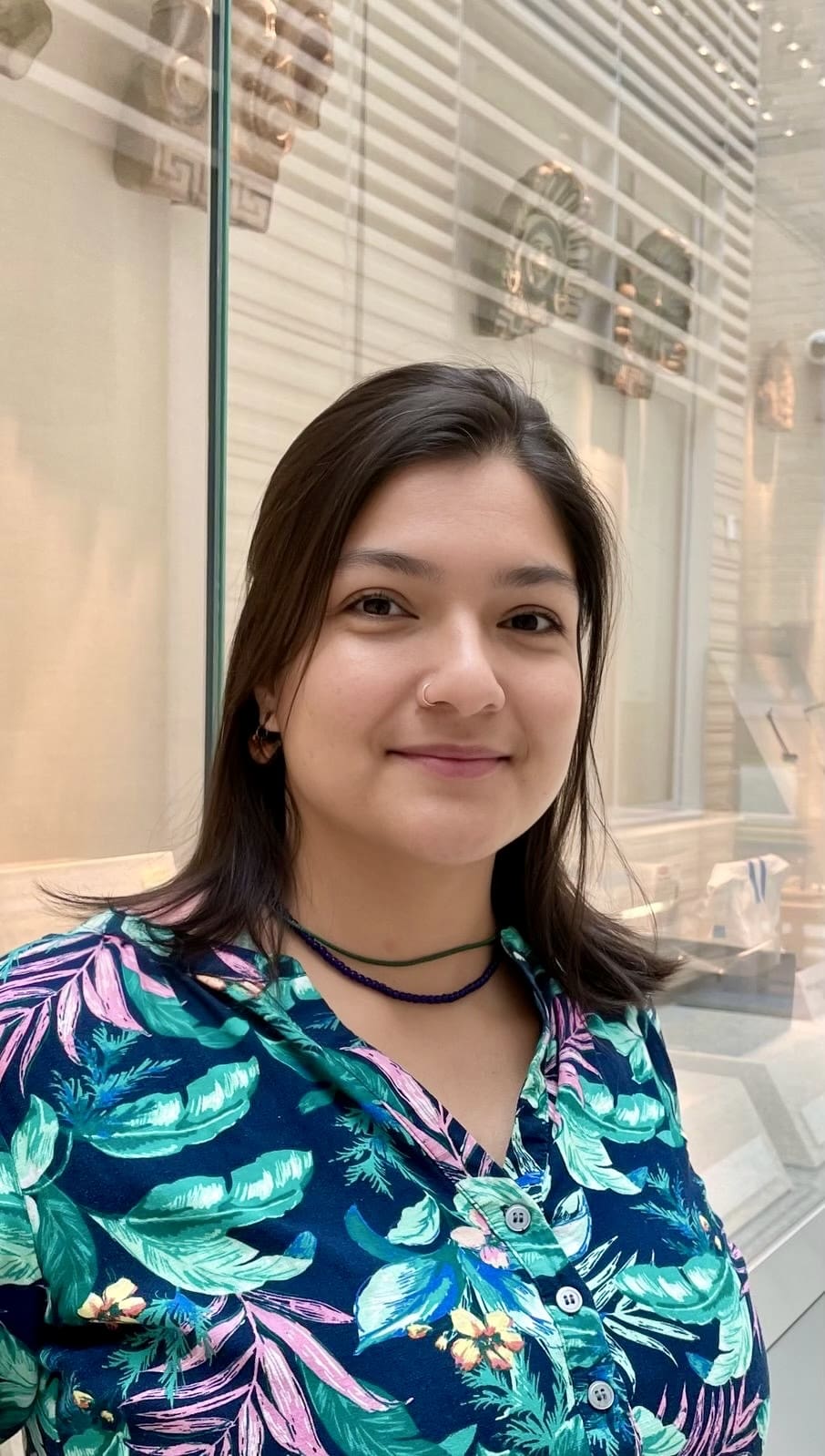Professional Staff

Sanchita Balachandran, Director
Sanchita Balachandran is Director of the Johns Hopkins Archaeological Museum and Senior Lecturer in the Department of Near Eastern Studies at Johns Hopkins University. In her current role, she conducts research of the Archaeological Museum’s collection and teaches courses related to the technical study and analysis of ancient objects, and the history, ethics and practice of art conservation. A recent project “Who Am I? Remembering the Dead Through Facial Reconstruction” sought to rehumanize two ancient Egyptian women whose remains are in the Museum’s care through the collaborative and collective work of forensic artists and scientists, medical and technical imaging specialists, art conservators, Egyptologists, osteologists, and graduate and undergraduate students. Recent interdisciplinary and interactive courses using the Archaeological Museum’s collection have included “Recreating Ancient Greek Ceramics,” which resulted in the production of a short film “Mysteries of the Kylix,” a freshman seminar on “Roman Egyptian Mummy Portraits,” as well as the courses “Critical Issues in Art Conservation” and “Ancient Color: The Technologies and Meanings of Color in Antiquity.” Balachandran received her graduate training as a conservator specializing in archaeological materials at the Institute of Fine Arts, New York University. She is currently pursuing a doctorate in Preservation Studies at the University of Delaware; her research focuses on uncovering the diverse identities of the ancient potters and painters producing ceramics in ancient Athens in the 6th to 4th centuries BCE by studying the objects they produced using experimental archaeological approaches, sensory observations of the production process, and Reflectance Transformation Imaging of the drawings still present on these surfaces. She is a Fellow of the American Institute for Conservation of Historic and Artistic Works. In her free time, Balachandran is at work on a mystery novel featuring a woman potter-sleuth in ancient Athens.

Dr. Betsy Bryan, Director
Betsy M. Bryan is Director of the Archaeological Museum, and Alexander Badawy Emerita Professor of Egyptian Art and Archaeology in the Department of Near Eastern Studies. Dr. Bryan specializes in the history, art, and archaeology of the New Kingdom in Egypt, ca. 1600-1000 B.C., with a particular emphasis on the 18th Dynasty, ca. 1550-1300 B.C. Her research interests include the organization and techniques of art production as well as the religious and cultural significance of tomb and temple decoration. As part of this research she has studied the unfinished elite painted tomb of the royal butler Suemniwet, ca. 1420 B.C. and is publishing it as a study in painting and its social meaning in the mid-18th Dynasty. Her current fieldwork is in the temple complex of the goddess Mut at South Karnak which she divides with the Brooklyn Museum’s expedition. Dr. Bryan’s research focuses on defining the earliest forms of the temple of Mut of Isheru. Retrieval and restoration of the decoration and architecture of the Hatshepsut and Thutmose III-era shrine is her present field project and is enlarged by study of the rituals represented by the early remains.

Kate Gallagher, Associate Director & Curator for Collections
Kate Gallagher is the Associate Director & Curator for Collections at the Johns Hopkins Archaeological Museum. She is responsible for maintaining museum records, processing accessions and loans, the collections database, and the supervision of student staff. Her current research focuses on object provenance and the formation of the collection. Gallagher holds an M.A. in Museum Studies and an M.A. in Anthropology from the University of Washington. Before joining the staff of the museum, she held the positions of registrar and collections manager at the Maryland Historical Society and laboratory manager and field archaeologist at a cultural resources management firm.

Dr. Meg Swaney, Assistant Curator of Exhibitions & Teaching
Meg Swaney is the Assistant Curator of Exhibitions & Teaching at the Johns Hopkins Archaeological Museum. She is responsible for overseeing the cataloging and display of the museum collection, organizing and guest lecturing for classes, and developing public events. Dr. Swaney specializes in the art and archaeology of Ptolemaic Egypt (332-30 BCE), with a particular emphasis on temple art. Her book, Designing a Temple for Repit, explores artistic production at the Ptolemaic Repit temple at Athribis and its visual modes of meaning-making. Her research interests also include the ethics of displaying ancient Egyptian human remains, Egyptomania and the history of Egyptology, the history of museums, and object-based experiential learning pedagogies. Dr. Swaney holds a PhD in Egyptian Art & Archaeology from Johns Hopkins University, an MA in Museum Studies from New York University, and a BA in Anthropology from the University of Chicago.

Danute Pérez Radziunas, Materials & Collections Manager
Danute Pérez Radziunas is the Materials & Collections Manager of the Johns Hopkins Archaeological Museum. She is responsible for overseeing the conservation, housing, handling, moving and display of the museum’s collection ensuring its proper care and preservation. Additionally, she ensures the correct and safe function of the museum facilities to maintain optimal conditions for the collection. Pérez Radziunas holds a BA in Conservation from Universidad Externado de Colombia and a M.A. in Cultural Heritage Studies from Pontificia Universidad Javeriana in Bogotá, Colombia. Before joining the team, Pérez worked in various cultural institutions in Colombia, where she combined her skills in conservation and cultural heritage management.

Sanchita Balachandran, Associate Research Scholar, Department of Near Eastern Studies
Sanchita Balachandran is an Associate Research Scholar in the Department of Near Eastern Studies at Johns Hopkins University and the former Director and conservator of the Johns Hopkins Archaeological Museum and former Associate Teaching Professor in the Department of Near Eastern Studies at Johns Hopkins University. Her research focuses on uncovering the diverse identities of the immigrants, migrants, enslaved people, women and children who were among the potters and painters producing ceramics in ancient Athens in the 6th to 4th centuries BCE using a combination of imaging techniques, materials science and experimental archaeology. Balachandran received her graduate training as a conservator specializing in archaeological materials at the Institute of Fine Arts, New York University, and completed her PhD coursework in Preservation Studies at the University of Delaware. Personal website.